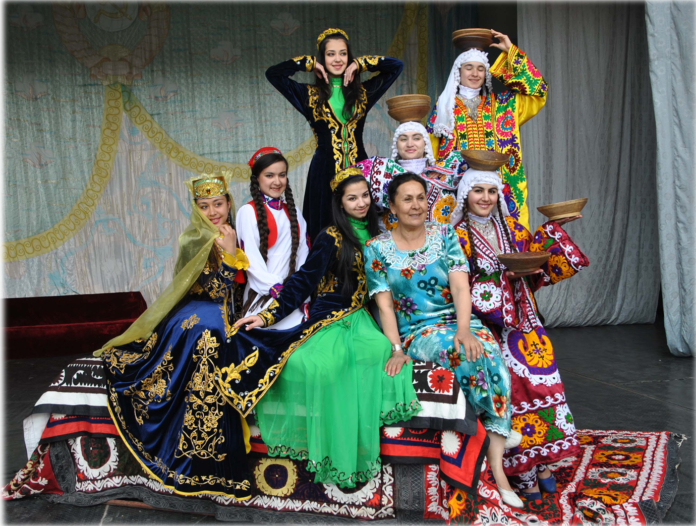Author:Lolisanam Ulugova (An independent researcher on Tajika arts and culture)
Amon Musoev has been a survived Puritan of dance traditions
I first met Amon Musoev 12 at the State Philharmonic in 2008. My friend took me to a concert of the Ganjina folklore and ethnographic ensemble. The concert impressed with the brightness of traditional costumes and diverse folk music of all regions of Tajikistan. We went backstage to congratulate Musoev for a successful concert. Mualim (polite addressing), seemed to be an ambitious, emotional, but undoubtedly authoritative person who has accomplished a lot in the art of dancing.
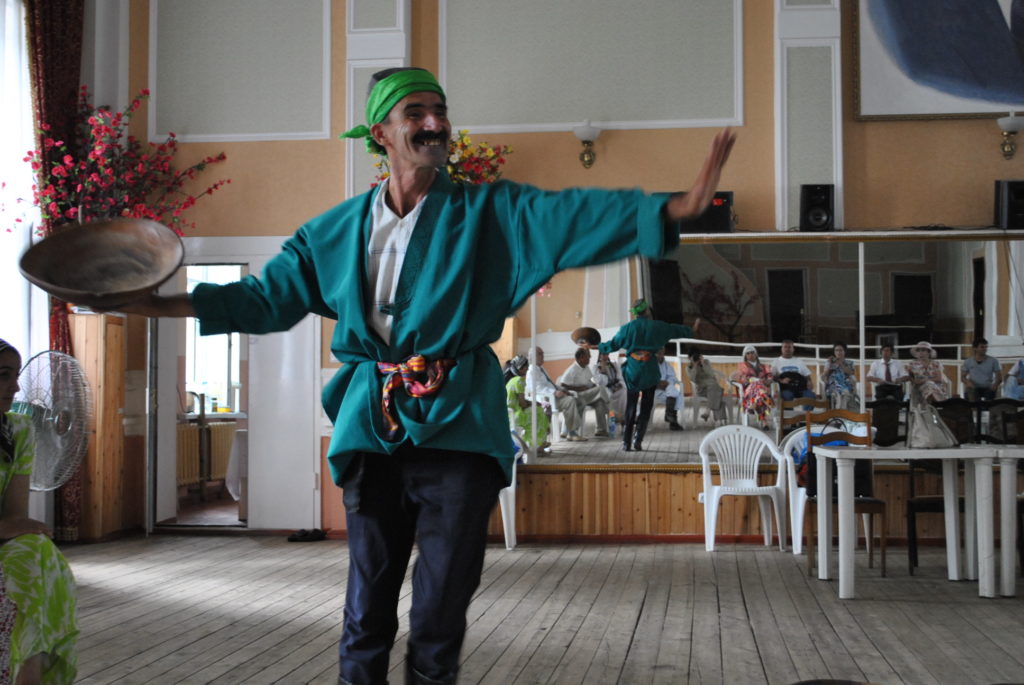
Amon Musoev (born 1958) loved dancing since childhood, but growing up in a traditional family, he could not imagine bounding his fate with dancing. Everything changed in 1976 when he served the Soviet army and became a member of a song and dance ensemble of the Soviet troops in Germany.
The command was preparing a cultural program, and then all the artistic talents of Musoev emerged and truck people around. He staged and performed the dance Chupon (shepherd), arousing the pride of his talents among the colleagues in the army. I didn’t miss the opportunity to ask if he had felt any humiliation from his colleagues in the army because of his talents in the art of dancing. He denied any hints of indignity or shame for him. He felt just respect and appreciation from the colleagues.
Immediately after demobilization from the army, he was enrolled at the Faculty of Choreography (1978) of the State Arts Institute named after Mirzo Tursunzadeh and two years he hid from his parents about his academic enrollment. Mualim has noted that besides his father, the great choreographer Gafar Valomatzade also did not want his children to dance, considering the dancer’s profession was frivolous, not enough dignified the status of men. However, mentioning it about Valomatzade (1916-1993) himself, a ballet dancer and choreographer, who had merits to the fatherland, is at least incomprehensible. Perhaps the late Valamatzade came to this opinion later, at
the end of his career, when the features of a condescending attitude towards the dancer’s profession became obvious? And at the beginning of his career, he initiated joint male and female dances,polished the male dance, bringing it to choreographic perfection.
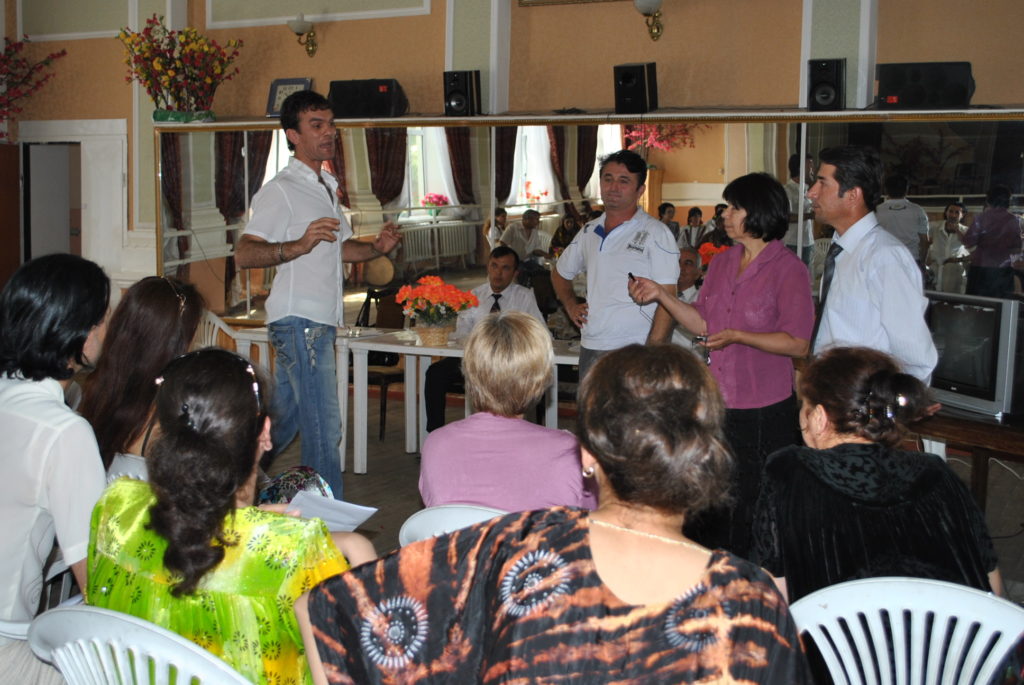
In 1982, after graduating with honors from the Institute of Arts, Musoev was assigned as a lecturer at the Art Institute’s Department of Choreography, but in 1986 Valomatzade invited him to Lola dance group as a choreographer. He considers these years of work in Lola under the leadership of Valamatzade invaluable for himself, because there really was a professional life in full swing, there were many interesting projects. At that time, almost all the stars of Tajik dance art, such as Malika
Kalantarova, Sharofat Rashidova, Halima Erkaeva, gathered in Lola, and the artists selflessly worked in honing their skills.
In addition to Valamatzade, his teachers were Aziza Azimova, Vera Kivatyuk, Nelly Stepanyants,who is still alive and well, and teaches at the State Arts Institute. Later, the Ministry of Culture would send him to work in the Ganchina dance collective to refresh the ensemble’s repertoire.
While working in ensembles, he was part of many folklore expeditions which were taken by the state.
He staged the performances Eastern Bazaar, Craftsmen basing on the expeditions.
“Our entire culture is originated from Persian-language literature. Almost all my productions are based on Persian-language poetry and folkdance traditions”, said Musoev. The Eastern Bazaar was an hour-long dance program that has united the dance traditions of all regions of Tajikistan, showing the ceremonies and rituals of Tajiks”. "Folklore expeditions took place even during the war in 1993,
despite the difficulties (during the 1992-1997 civil war), everything was kept on sheer enthusiasm said Musoev.The lack of electricity affected not only the health of expedition members, but also the functionality of expedition tasks, since there was nothing to charge the cameras batteries, but,nevertheless, the work continued.
I asked Musoev what attracts him to dancing? He answered me following that “the beauty of the movements and curves of the body, the response of the body to music attract him. The dance reflects the thoughts and aspirations of a dancer, his life, philosophy of life. The dance could be dancing in silence, sometimes only with head movements, or with certain parts of the body, in one place. Dance can be danced not only in joy and fun, but also when the heart is heavy and misery.
The dance allows you to reflect the flight of the soul, its energy”, completed his pathetic speech to me.
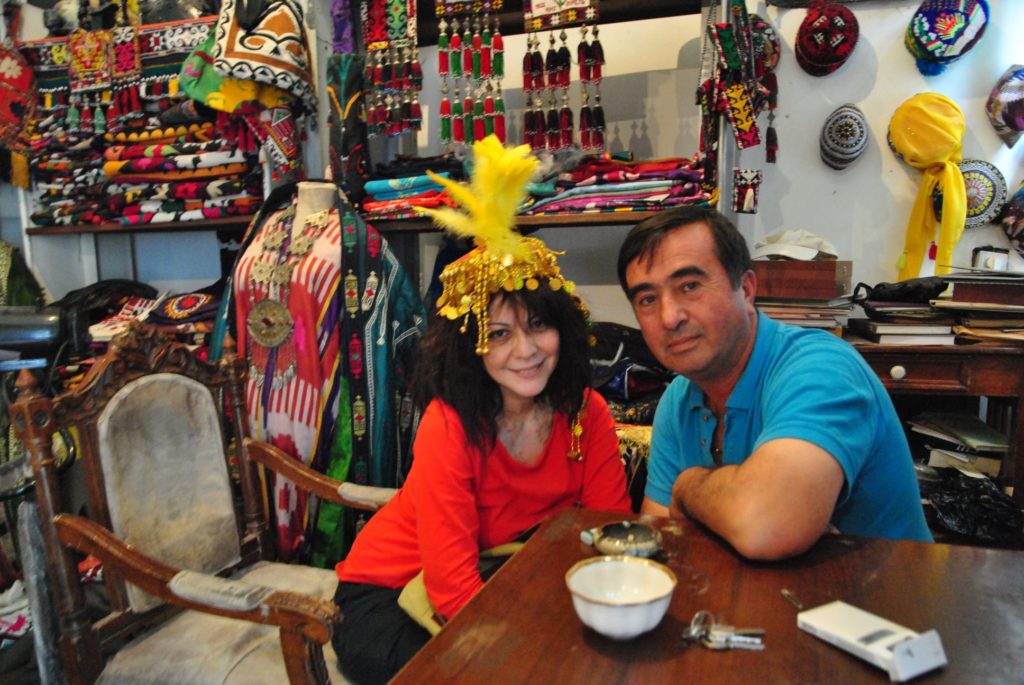
He adheres to the traditionalist values in choreography, prefers not to mix styles and directions of dance, to leave their true roots. He has traveled almost all over the country, and has sufficient knowledge about the meaning and origins of the dance traditions of the Tajik people. Working in the folklore-ethnographic ensemble Ganchina, he insisted on the originality, the authenticity of dances.
He has always been against the eclecticism in dance performances. He believes that “each dance of each region is peculiar, unique, not similar to each other. And this should be set up as a foundation.It’s like a ruby stone, you don’t have to do anything with it, just carefully cut it, and frame in as the same with a dance”.
“I have always been against the uniformity of dance groups,” Musoev told me. Each ensemble was established with its own flavor. For example, Ganchina was created as an ensemble of Tajik folklore dances, Zebo as a modern female lyric dance group, Lola as an ensemble containing dances of the peoples of the world, with a strong choreography of performances. The ensemble Lola, by the way,was an all-union project of the Peoples, Artist of the USSR Igor Moiseev (1906-2007), which Ganjina (treasure) dance group was set up in 1977 by the Tajikistan People Artists Zafar Nozimov and Gavhar Mirjumaeva. Folk dances and songs performed by company conveying the centuries-old national customs, such as wedding, invitation of son-in-law, lullaby, you can feel traditions kept since timed out of mind. The songs “Dilo Dil”, “Ganjina”, “Mavrigy”, “Sezarb”, “Yangamo” are known in Khatlon, Badakhshan, Samarkand, Zaravshan and others. Their performance corresponds to the best musical traditions contributed to the development of national dance schools in the Soviet Union republics. Undoubtedly
that the project transformed its individuality, brought collectivity to the Tajik dance arts, which never existed, remains controversial, but this is probably a separate topic for another conversation.
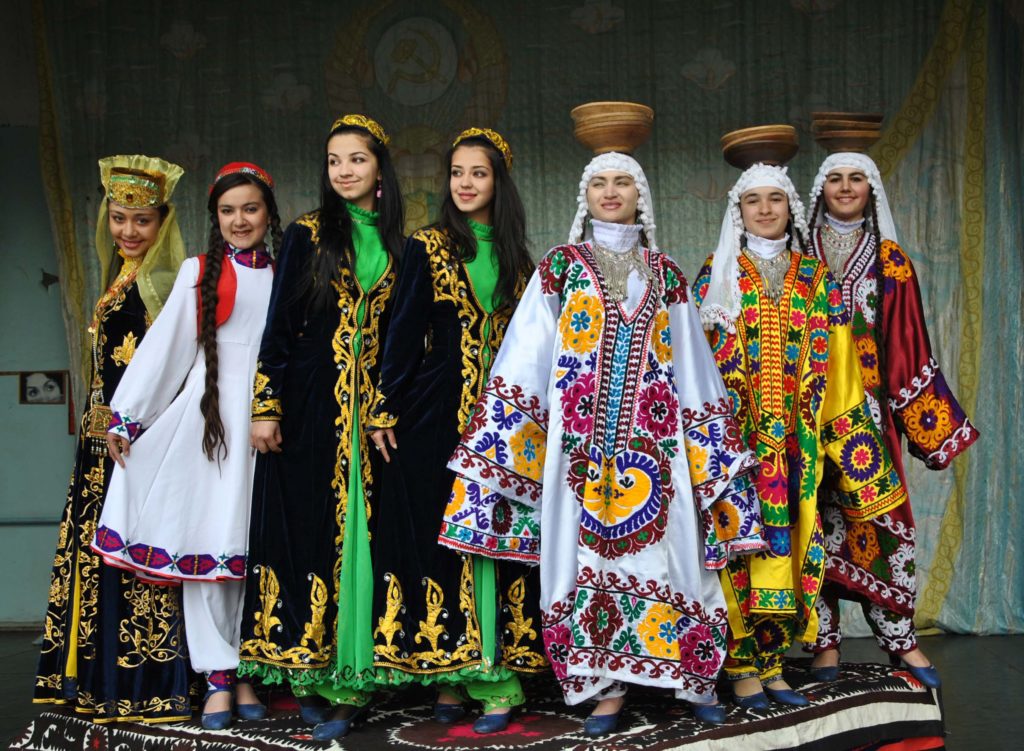
“I have nothing against eclecticism, let it be in dances, but then they should be called eclectic, not folk dances,” declared Musoev. Padida has been one of the brightest examples of the eclectic dance groups, its fusion direction has been taken as its basis. And its beautiful without doubts. However,what do we see about dance groups now? They have a resemblance to each other, there is no peculiar style of dance groups left Gulrez has a similarity with the ensemble Zebo. They have the same handwriting, emphasizes the lyricism and demonstrative femininity of the artists.Musoev believes that the era of solo dancing is over. “The skill of the dancers could only be
appreciated through the solo dance. There were great solo dancers such as Malika Kalontarova,Sharofat Rashidova, Halima Erkaeva, Savrigul Kurbanova, the late Zaragul Iskandarova, who throughout her life promoted the dances of the Badakhshan region. There has left Khairi Vatanova, who popularizes the dances of the southern region and thats it,” the choreographer noted with the bitterness.
I asked him about the male dancing, what does it seem to him, if there were no male dances left? He replied that this was the same trend of disappearance of interest in solo dances in general, as well as to male dances too. Men dance less and less as if not a man business, to dance in public. The Soviet regime was able to overcome the stigma of dancing men. It had more to do with banning women from public visibility. Dancing in public in pre-revolutionary times was associated with the practice of dressing up boys in women outfits for the delight of the public of the male maracagi
gatherings. This practice was destroyed during the Soviet era and women were introduced into the public space and could dance in public. “For us, the Soviet government did a lot of good things,women felt more freedom, liberated,” said the choreographer. The role of the dancer in Soviet times was increased in society. " Incidentally, Professor Nizam Nurjanov, in his work,Traditional Theater of Tajiks, points to the low status of the profession of a dancer in pre-revolutionary times. They were called “luli”(gypsies) or sometimes”duogu”(beggar worshipers). “People treated the profession of artists with contempt. They did not marry artists and did not give them in marriage to artists”. It should be noted that among the Persian-speaking countries in the region, Tajikistan is the only country where the art of dancing is preserved. Women do not dance neither in Afghanistan nor in Iran, and only we have a female dance. Tajikistan treats its dance heritage more carefully,proceeding from the fact that almost all dance groups are supported by the state. But, on the other hand, Musoev noticed that when you dance together, there was an involuntary interpenetration of dance movements and styles. “In the Pamirs, women and men have danced together for a long time,and that is why their dances are not much different from each other, they similar to each other. The smoothness of both male and female dances is characteristic and does contribute into indifference of the dancing”…….. To be continued.



